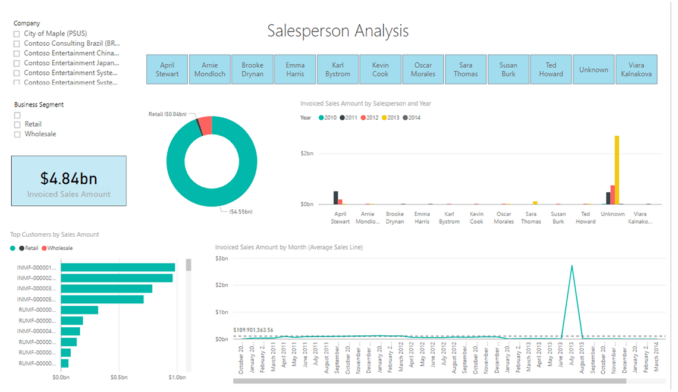What’s the Most Cost-Effective Way to Migrate from On-Premise ERP to Microsoft Dynamics 365 F&SCM?

Many software vendors have been shifting to a cloud-first approach to developing, deploying, and selling their software. ERP is no exception. For the past several years, Microsoft has been refining its portfolio of ERP and CRM business software to fit with a cloud-centered approach.
For customers of the company’s legacy ERP products, including Microsoft Dynamics AX, Microsoft Dynamics NAV, Microsoft Dynamics GP, and Microsoft Dynamics SL, that means an eventual migration to one of the two cloud-based ERP products – Microsoft Dynamics 365 Business Central (D365 BC) or Microsoft Dynamics 365 Finance & Supply Chain Management (D365 F&SCM).
Going forward, Microsoft will focus its efforts on just those two ERP products. Microsoft D365 F&SCM is targeted at mid-sized enterprises, while Microsoft D365 BC is a good fit for smaller businesses with simpler requirements. Both products have their roots in one of the existing Microsoft ERP code lines (AX and NAV, respectively), but the company has made some significant changes and modernized their technology.
If your organization is currently running any of the Microsoft Dynamics legacy products, Microsoft is probably encouraging you to think about migration to the cloud. Microsoft plans to support its legacy products for at least until 2028, but the company’s future investments in improved functionality will focus on the two new Microsoft D365 products.
There are certainly a number of benefits to making the move to cloud ERP. It provides a robust, scalable IT infrastructure and stronger integration capabilities that open the door for broader adoption of digital transformation technologies. Cloud ERP delivers innovations on a more continuous basis, eliminating the familiar (but costly and sometimes painful) upgrade projects of the past. Also, with the shift to more remote working in 2020, it’s easier to provide access to critical business software via the cloud than for organizations to manage VPNs and security on their own to support distributed teams.
Getting to the cloud, though, will require one more big project, with all of the cost, complexity, and risk that go along with such endeavors. How can businesses manage the process to achieve positive results while maintaining budget and risks within acceptable parameters? Here are some best practices:
Start the Process Early
Although Microsoft has pledged to support its legacy line of Dynamics products for at least another eight years, business leaders should start having a conversation now about cloud migration. A long-term vision for the migration process enables organizations to more effectively plan for the future and to break the process down into smaller stages that you can manage more easily and with lower risk.
By allowing enough time for detailed planning and analysis, organizations can more thoroughly assess their specific needs. That includes identifying the components of Microsoft D365 that the new platform will require. Microsoft is deploying its cloud-ERP products with a more flexible licensing model than its legacy on-premise ERP software.
Microsoft D365 F&SCM, for example, consists of two primary components–Microsoft D365 Finance and Microsoft D365 Supply Chain Management. Those work together as a seamless whole, but you can purchase user licenses for limited subsets of the overall product. That means you’ll only pay for the functionality you need for each user, rather than a higher cost for unlimited access.
Microsoft has further broken down user access into Full Users (who require more functionality) and less expensive Team Members (who can get by with limited functionality). By taking the time to understand the detailed parameters that define functional access to the system for each user type, companies can choose a licensing plan that best suits their needs, optimizing costs in the process.
Business leaders should also take note of discounts that are available to existing Microsoft Dynamics customers. As the company aims to aggressively grow its presence as a leader in cloud ERP, Microsoft has incentivized customers to make the switch, offering attractive subscription rates to customers of their existing legacy ERP solutions.
Deploy a Test Environment
It has long been a common practice in large organizations to set up a test environment or “sandbox” that people throughout the organization can use to get familiar with a new software system, try out different configurations or customizations, load test data in advance of full data migration, or train users on how to use the new system.
If your migration involves significant customizations, it’s common to set up a development environment as well. Programmers build software extensions and integrations in the development environment. After initial testing, programmers can push those developments to the test environment, in which a larger set of test scenarios can be executed against them, and stakeholders throughout the organization can get familiar with the new system.
In many smaller organizations, it can be tempting to bypass the process of setting up test and/or development environments. After all, setting up each additional system requires some time, effort, and expense. In the end, however, it contributes to a more stable, predictable process in which stakeholders throughout the organization can have higher confidence and will deliver the expected benefits.
In an earlier blog post, we discussed an innovative way to automate the extraction, transformation, and loading of data from your existing ERP system into a test or development environment. By using a data warehouse as a means for automating data migration, companies can periodically push data from their live system to a test or development environment. This approach shortens the downtime required in the days preceding an ERP system go-live.
Break the Project into Smaller Pieces
Finally, business leaders should consider breaking their cloud-ERP migration into smaller chunks. That can include projects that can be completed well in advance, with immediate benefits to the organization and a dramatic reduction in cost and risk when the time comes to move your ERP to the cloud.
In the previous section, we addressed one possible means of achieving this–namely, developing an automated data migration process that you can use time and again to push data from your live ERP system into a test or development environment. By doing so, current ERP data can be repeatedly exposed to testing over a period of time. That, in turn, vastly increases the likelihood that you will discover errors and anomalies in the data migration long before the new system goes live.
Another major project that you can perform in advance involves an overhaul of reporting tools, processes, and designs. This can be much easier than it sounds, and it’s especially important in the context of migration to Microsoft D365 in the cloud because Microsoft is making major technical changes to the way you access data for reports, as well as to the reporting toolset for its ERP applications.
To enhance security, Microsoft has restricted direct access to the Microsoft D365 F&SCM database, replacing it with an abstraction layer consisting of something called “data entities.” This approach is more secure, but it has some very significant drawbacks, including slower performance, a steep learning curve, and an increased dependency on highly specialized IT resources.
For migration to Microsoft D365 F&SCM, the new approach requires a substantial investment in creating the data entities that will drive reporting against the cloud-ERP system. That effort will require highly specialized technical experts and consume a significant amount of time.
Microsoft’s new approach to reporting is due to its desire to move customers toward Azure Data Lakes and Microsoft Power BI. Both of those products have a role to play in large enterprises, but they are poorly suited to core financial and operational reporting.
In this respect, reporting is the Achilles’ heel in Microsoft’s cloud-ERP migration strategy. Customers need to be aware of this potential pitfall and plan in advance to avoid it altogether.
Companies planning an eventual migration to Microsoft D365 F&SCM can get a head start on their cloud migration project, bypassing the reporting nightmare entirely. By implementing a robust third-party reporting and analytics tool today, you can complete a major portion of the cloud migration project well in advance, reducing overall project risk, lowering costs, and decreasing dependency on IT.
Reporting and analytics solutions from insightsoftware eliminate complexity, reduce cost, and decrease the risk of lengthy implementations. They remove the dependency on technical experts, allowing finance and accounting, operations, and other departments to create and modify reports without relying on the IT department.
What insightsoftware Brings to the Table
Providing complete data access is what insightsoftware does. We offer powerful reporting and analytics products that integrate with over 140 different ERP software systems, including the entire family of Microsoft Dynamics products. We have tailored our Jet Analytics solution to fit perfectly with Microsoft D365 F&SCM and have made significant improvements to how customers manage their reporting requirements. To lower the impact on your IT staff and finance teams, we offer a different approach aimed at significantly reducing costs and time.
Jet Analytics makes the cloud migration process vastly easier and less expensive. Reports developed for legacy Microsoft Dynamics products will work in the Microsoft D365 cloud-ERP solutions without extensive modification. To learn more about how insightsoftware can enable agile, streamlined reporting against Microsoft D365 in your organization, contact us for more information or a free demo.









